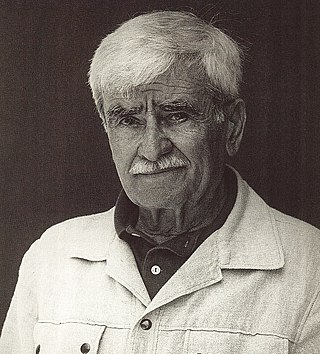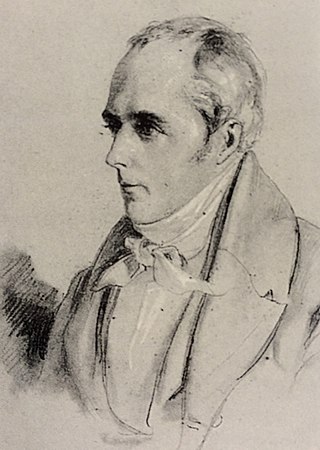
Luca Signorelli was an Italian Renaissance painter from Cortona, in Tuscany, who was noted in particular for his ability as a draftsman and his use of foreshortening. His massive frescos of the Last Judgment (1499–1503) in Orvieto Cathedral are considered his masterpiece.

Sir John Wyndham Pope-Hennessy, was a British art historian. Pope-Hennessy was director of the Victoria and Albert Museum between 1967 and 1973, and director of the British Museum between 1974 and 1976. He was a scholar of Italian Renaissance art. Many of his writings, including the tripartite Introduction to Italian Sculpture, and his magnum opus, Donatello: Sculptor, are regarded as classics in the field.

Pinturicchio, or Pintoricchio, also known as Benetto di Biagio or Sordicchio, was an Italian painter during the Renaissance. He acquired his nickname because of his small stature and he used it to sign some of his artworks that were created during the fifteenth and sixteenth centuries.

Gino Severini was an Italian painter and a leading member of the Futurist movement. For much of his life he divided his time between Paris and Rome. He was associated with neo-classicism and the "return to order" in the decade after the First World War. During his career he worked in a variety of media, including mosaic and fresco. He showed his work at major exhibitions, including the Rome Quadrennial, and won art prizes from major institutions.

The Gemäldegalerie is an art museum in Berlin, Germany, and the museum where the main selection of paintings belonging to the Berlin State Museums is displayed. It was first opened in 1830, and the current building was completed in 1998. It is located in the Kulturforum museum district west of Potsdamer Platz.

Wilhelm von Bode was a German art historian and museum curator. Born Arnold Wilhelm Bode in Calvörde, and known as Wilhelm Bode for most of his career, he was ennobled in 1913, and thereafter adopted the aristocratic "von". He was the creator and first curator of the Kaiser Friedrich Museum, now called the Bode Museum in his honor, in 1904.

Poggibonsi is a town in the province of Siena, Tuscany, central Italy. It is located on the River Elsa and is the main centre of the Valdelsa Valley.

Alberto Burri was an Italian visual artist, painter, sculptor, and physician based in Città di Castello. He is associated with the matterism of the European informal art movement and described his style as a polymaterialist. He had connections with Lucio Fontana's spatialism and, with Antoni Tàpies, an influence on the revival of the art of post-war assembly in the United States as in Europe.
Castelnuovo Scrivia is a comune (municipality) in the Province of Alessandria in the Italian region Piedmont, located about 90 kilometres (56 mi) east of Turin and about 20 kilometres (12 mi) northeast of Alessandria.

Castello di Compiano is a castle at the top of Compiano's hill, in the province of Parma, northern Italy.
The Antikensammlung Berlin is one of the most important collections of classical art in the world, now held in the Altes Museum and Pergamon Museum in Berlin, Germany. It contains thousands of ancient archaeological artefacts from the ancient Greek, Roman, Etruscan and Cypriot civilizations. Its main attraction is the Pergamon Altar and Greek and Roman architectural elements from Priene, Magnesia, Baalbek and Falerii. In addition, the collection includes a large number of ancient sculptures, vases, terracottas, bronzes, sarcophagi, engraved gems and metalwork.

The British Institute of Florence is a cultural institute founded in 1917 in Florence, Italy, with the aim of promoting Anglo-Italian cultural relations, teaching English and Italian languages, and running a library of English books to illustrate British and Italian literature, art, history and music. It is the oldest overseas British cultural institute in the world.

Janet Ann Ross was an English historian, biographer, and Tuscan cookbook author.

Antea is a painting by the Italian Mannerist artist Parmigianino. The painting is in the collection of the Museum of Capodimonte in Naples, Italy.

Edward Solly was an English merchant living in Berlin, who amassed an unprecedented collection of Italian Trecento and Quattrocento paintings and outstanding examples of Early Netherlandish painting, at a time when those schools were still largely unappreciated. In 1821, following negotiations by his associate Benjamin Wegner, Solly sold his collection of about 3000 works to the Prussian king; 677 of them formed a core of the Gemäldegalerie, Berlin. Solly acquired a second collection during his years in London after 1821. Solly is also credited for having undertaken a perilous journey to deliver the first news of Napoleon's defeat at the Battle of Leipzig to the English.

Palazzo del Magnifico, also known as Palazzo Petrucci, built as the residence of Pandolfo Petrucci, is located in Siena on Piazza San Giovanni at the corner of Via dei Pellegrini.

The Pinacoteca Comunale ofCittà di Castello is the main museum of paintings and arts of Umbria Italian Region, alongside the Perugia's National gallery, and it's housed in a renaissance palace, generally preserved in its original form.

Holy Family with the Infant Saint John the Baptist is a painting by Parmigianino, executed c. 1528. It was in the Palazzo Farnese in Rome until 1662, when it moved to Parma. There it hung in the Palazzo del Giardino and later in the Galleria Ducale - the 'Descrizione' of the latter in 1725 called it one of the finest works on display there. It and the rest of the Farnese collection were later moved to Naples and the work was exhibited for a few years in the Palazzo Reale before moving to its present home in the National Museum of Capodimonte. Two early copies remain in the Galleria Nazionale and Palazzo Comunale in Parma.

Adoration of the Magi is a painting in tempera on wood panel by Luca Signorelli (1450–1523) and his assistants, executed c. 1493–1494, and now in the Louvre in Paris. It was probably the first painting he produced in Città di Castello, and originally hung over the main altar of the monastery church of Sant'Agostino. The surface displayed within the frame is 331 cm by 245.5 cm. In late 2022 it was not on display.

The Parte Guelfa Holy Family is a tempera on panel painting by Luca Signorelli, created c. 1490, now in the Uffizi in Florence.



















